Physical Address
304 North Cardinal St.
Dorchester Center, MA 02124
Physical Address
304 North Cardinal St.
Dorchester Center, MA 02124
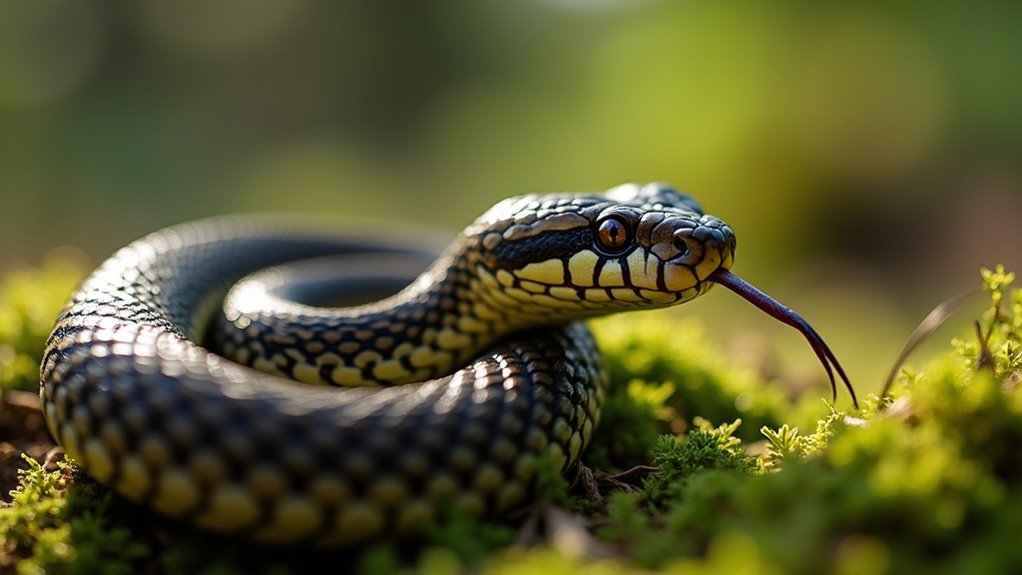
Discover Europe's hidden killers, from powerful bears to venomous spiders, that claim more lives than you'd ever imagine.
Europe houses several dangerous animals you might not expect. The brown bear tops the list with powerful claws and impressive speed, while venomous creatures like the asp viper and Mediterranean black widow lurk in southern regions. Surprisingly, cattle cause multiple human deaths yearly in the UK. Other threats include the Portuguese Man O’ War, Eurasian wolves, wolverines, and disease-carrying ticks. Discover what makes these creatures Europe’s most formidable wildlife hazards.

While Europe may not conjure images of dangerous wildlife like Africa or Australia, the continent is home to several animals that pose real threats to humans. You’ll find that wolves, once responsible for thousands of deaths in France alone between 1362-1918, haven’t caused a fatal attack in Europe for over 40 years.
Vipers represent one of the few genuinely dangerous snake species, particularly the asp viper in southwestern Europe with its efficient venom delivery system. In Turkey specifically, travelers should be cautious of venomous snakes, as the country is home to nine different species that require careful avoidance. When hiking, you’re safer avoiding tall grass in warmer southern regions where these snakes live.
Despite public perception often exaggerating wildlife dangers, most animal-related injuries in Europe come from domestic animals, not wild ones. The brown bear population in Europe numbers around 20,000, with these powerful predators posing significant risks in regions like Transylvania. Regional risks vary considerably, with proper precautions like carrying first aid kits greatly reducing potential dangers.
The European brown bear functions as the continent’s most formidable predator, dwarfing the threats posed by other dangerous wildlife. You’ll find the largest population in Romania’s Carpathians, with 7,500-10,000 bears, while Russia hosts an impressive 100,000 bears overall. Today, an estimated 14,000 brown bears live across ten fragmented populations throughout Europe, raising concerns about genetic isolation and long-term survival.
These massive creatures can weigh up to 400kg for males, with 10cm claws and bone-crushing bite force of 1,200 PSI. Despite their bulk, they’ll reach speeds of 50km/h when motivated.
Though fatal attacks remain rare (1-3 annually), bears increasingly clash with humans as their populations expand. While brown bears can be spotted in natural preserves near must-visit destinations like Split, encounters typically occur during surprise meetings or when protecting cubs.
Conservation efforts through the EU Habitats Directive have successfully increased populations, though isolated groups in the Pyrenees and Apennines face genetic challenges.
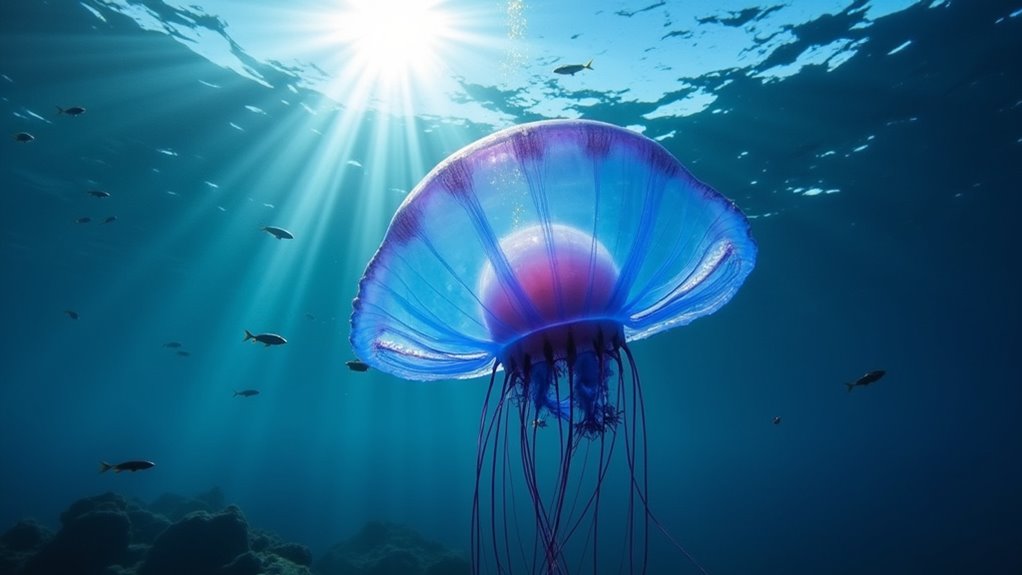
Despite its jellyfish-like appearance, the Portuguese Man O’ War represents one of Europe’s most deceptively dangerous marine creatures. You’ll find these colonial organisms washing up on UK and Irish shores, especially during autumn storms.
The Portuguese Man O’ War lurks beneath beautiful blue disguise—a deadly colonial predator arriving with autumn’s tempestuous seas.
Don’t be fooled by their stunning translucent blue bladders—these aren’t true jellyfish but complex colonies with tentacles extending up to 30 meters. Their neurotoxic venom causes excruciating pain and distinctive welts. The name comes from its resemblance to Portuguese warships at full sail.
What makes them particularly treacherous is their ability to sting weeks after death. If stung, rinse with vinegar (never freshwater) and apply 45°C water to neutralize the toxins.
While fatalities are rare, these passive drifters often form massive “legions” of 1,000+ individuals, creating dangerous zones for swimmers and beachgoers alike. They’re particularly common in the waters surrounding Mediterranean islands like Cyprus, presenting hazards for travelers seeking coastal adventures.
Among Europe’s venomous snakes, the Asp Viper (Vipera aspis) functions as the continent’s most lethal serpent, packing a potent neurotoxic venom that can cause severe complications without prompt treatment.
If you’re hiking through rocky slopes or forest edges in France, Switzerland, Italy, or northwestern Spain, you’ll need to watch for this dangerous reptile.
Its venom rapidly attacks your peripheral nervous system, causing intense pain, swelling, and potentially life-threatening paralysis within 15-30 minutes of a bite.
Without antivenom, you’re facing an 8-day hospitalization or worse—untreated severe cases carry a 1.7% mortality rate.
The good news? Viperfav antivenom has proven remarkably effective, reducing hospital stays to just 2 days and eliminating deaths in treated patients.
Despite its dangerous reputation, the Asp Viper is generally a calm snake that prefers to flee rather than attack when encountering humans, only biting as a last defensive measure.
This serpent is considered one of France’s deadliest animals, especially in the country’s southern regions where it thrives in warm, rocky habitats.
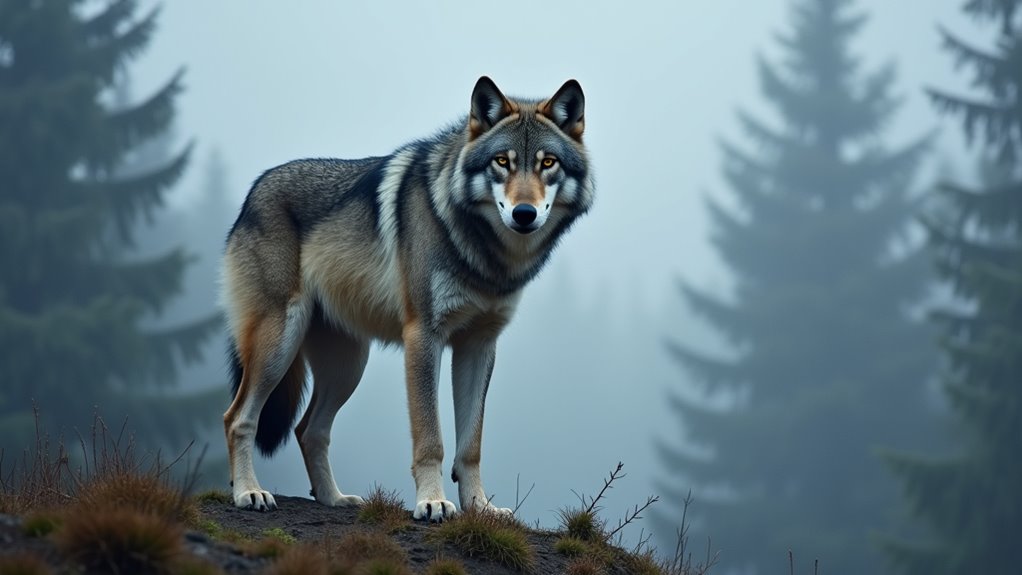
Roaming through vast European wilderness from Spain to Russia, Eurasian wolves represent one of the continent’s most formidable predators, with their powerful 40 kg frames and ability to sprint at 37 mph when pursuing prey.
While you’re hiking through European forests, you’re unlikely to encounter these elusive carnivores—they typically avoid humans. However, these apex predators have made a remarkable comeback since the 1990s, with Russia hosting the largest population of around 30,000 individuals. Historical records show these impressive animals once reached extraordinary sizes, with a specimen in Ukraine weighing 86 kg – the maximum recorded weight for the species.
Their hunting prowess is impressive: packs coordinate to bring down large prey like wild boar and deer, consuming 2-5 kg of meat daily. If you’re exploring forests near Zagreb’s wilderness, you might be in wolf territory, though sightings remain exceptionally rare.
Though protected under EU law, conflicts with humans remain their greatest threat, despite their vital role in maintaining ecological balance by regulating herbivore populations.
While wolves represent a highly visible predator in European forests, the Mediterranean Black Widow spider poses a more subtle danger throughout southern Europe. You’ll find this distinctive black spider with its 13 red or yellow spots in dry, warm areas across the Mediterranean region, from southern Spain to southwest Asia.
If you’re bitten, you’ll experience symptoms within 15 minutes. The spider’s α-latrotoxin causes severe muscle spasms, pain, vomiting, and hypertension that can last for days. In Kazakhstan, where it’s known as karakurt, this spider has been documented to deliver bites powerful enough to kill camels.
Despite building messy webs in dark corners, these shy creatures aren’t aggressive unless disturbed.
To stay safe, avoid reaching into hidden areas where they nest. If bitten, wash the area immediately and seek medical attention for severe symptoms. Treatment typically focuses on managing pain, with antivenom reserved for serious cases. Croatia, considered generally safe for travelers, does have these spiders in some coastal areas, so exercise caution when exploring rocky or remote locations.
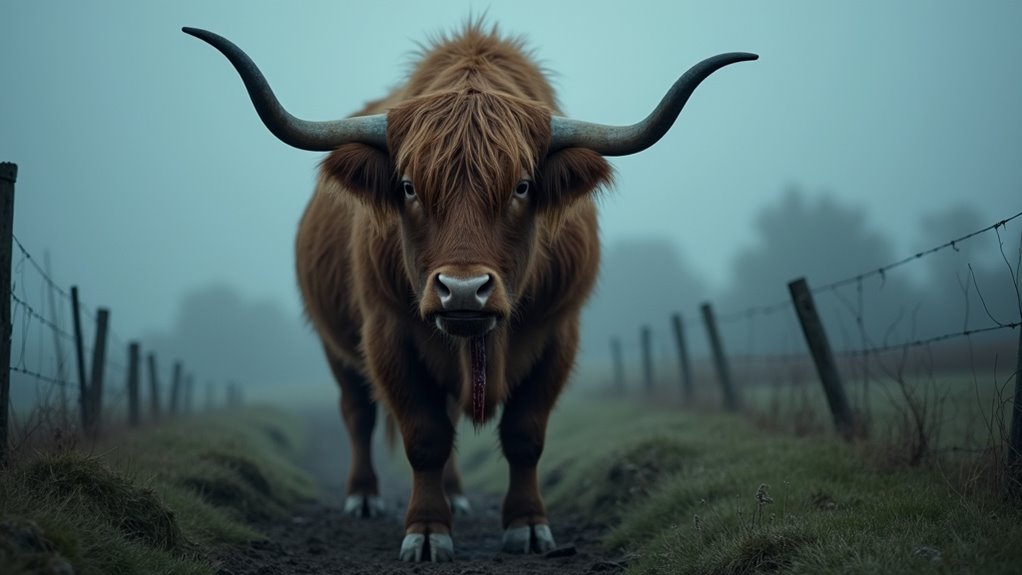
Despite their placid appearance, cattle rank among Europe’s deadliest animals, causing 4-6 human fatalities annually across the British countryside alone. You’re most at risk when cows are protecting their calves, with 91% of public fatalities occurring in these scenarios. Herds are more dangerous than individual animals, accounting for nearly half of all attacks. If encountered, safety strategies include waving arms, making eye contact, and singing loudly to distract charging cows. Unlike in Turkey where stray dogs present a significant public safety concern, European cattle attacks occur primarily in rural agricultural settings.
Don’t be fooled by their gentle demeanor—cattle are Europe’s silent killers, especially when protecting their young.
The highest risk situations include:
Victims often suffer crushing injuries, fractured bones, and punctured lungs. Wales and Scotland have nearly double England’s cattle-related death rate per capita.
You’ll find these ticks lurking in humid woodlands, grasslands, and heathlands across Europe, extending into North Africa and the Middle East. They’re particularly common in areas with dense vegetation and high humidity.
What makes them truly dangerous isn’t their bite but the diseases they transmit. They’re primary vectors for Lyme disease, tick-borne encephalitis, anaplasmosis, babesiosis, and louping ill. These pests detect potential hosts using their specialized Haller’s organ that senses carbon dioxide, temperature changes, and vibrations as animals or humans pass by.
With climate change expanding their range, your risk of encountering them is increasing. Even the mountains near Oslo have seen increasing tick populations in recent years, making vigilance necessary during outdoor activities. When exploring European wilderness, use repellents and check yourself regularly for these tiny but potentially deadly hitchhikers.
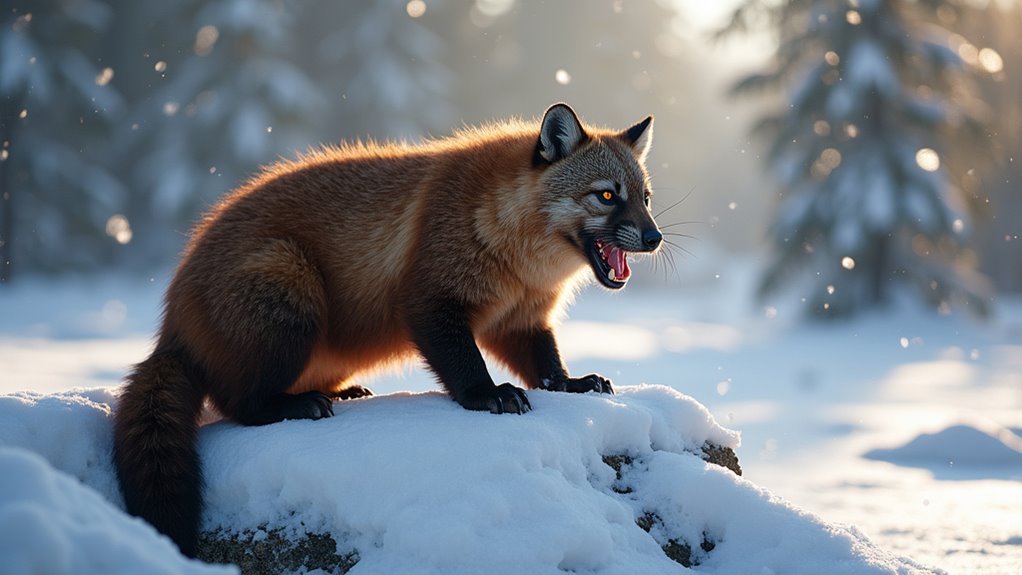
How would you feel stumbling upon Europe’s fiercest predator in the remote forests of Scandinavia? The wolverine, though rarely seen, roams the northern regions of Norway, Sweden, Finland, and Russia, with only about 500 in Fennoscandia.
Don’t let their scarcity fool you. These solitary hunters are formidable opponents with:
You’re unlikely to encounter one due to their shy nature and preference for areas with minimal human activity. While rare throughout Europe, wolverines have been documented in Estonian forests as part of the dangerous wildlife that inhabits the country. In Norwegian, they’re called fjellfross, a name related to their reputation for gluttony. Conservation efforts aim to preserve their dwindling populations, as human development continues to threaten their natural habitats.
You’ve just explored Europe’s most dangerous wildlife—from titans like the brown bear to microscopic threats like ticks. While these creatures may seem like shadows in the continent’s beautiful landscape, they’re very real hazards you should respect. As you venture through Europe’s wilderness, remember that knowledge is your best shield. With awareness and caution, you can safely enjoy all the natural wonders this diverse continent offers.